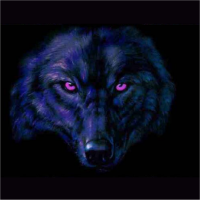Even though you don't have stat counters and right-click -> inspect in Real Life, you can get a pretty good idea of a person's statistics simply by looking at them. For example, you know that that 2-meters-tall guy, weighting a hundred kilograms, without any fat in sight, has more strength than you do; and you know that, without really being a body builder, there's a good chance you could have beaten Albert Einstein in arm wrestling. It's simply about making sense of what you see, and games like Fable took that concept in and made your looks based on your capacities.
So I'm thinking, how come you can decide on your appearance at character creation, and that appearance has very little to do with your actual stats? World of Warcraft comes to mind here, with a gnome warrior having only marginally less strength and and hit points than a tauren warrior (Who is easily three times bigger than the gnome). Worse, a gnome warrior is very much stronger than, say, a tauren druid of the same level, yet you wouldn't expect a tauren to lose in arms wrestling or weight lifting against a gnome, no matter how warriorish he is.
Now, if the game only features one race, you would expect all members of that race (Unless significant sub-races are present) to have the same kind of growth potential; starting appearances would have little to do with potential stats. In a game featuring vastly different races, however, what you are should affect what you can be. A player making a character of a strong race and a magic-using character would play differently than one of an intelligent race for the same magic-using character. So what I think is, appearances count, and your stats should affect your appearances; at least, the physical stats would, those typically being strength, constitution and dexterity.
Again, this is simply an effort to make the game look more in line with reality. After all, you're not getting any stronger reading this.
So I'm thinking, how come you can decide on your appearance at character creation, and that appearance has very little to do with your actual stats? World of Warcraft comes to mind here, with a gnome warrior having only marginally less strength and and hit points than a tauren warrior (Who is easily three times bigger than the gnome). Worse, a gnome warrior is very much stronger than, say, a tauren druid of the same level, yet you wouldn't expect a tauren to lose in arms wrestling or weight lifting against a gnome, no matter how warriorish he is.
Now, if the game only features one race, you would expect all members of that race (Unless significant sub-races are present) to have the same kind of growth potential; starting appearances would have little to do with potential stats. In a game featuring vastly different races, however, what you are should affect what you can be. A player making a character of a strong race and a magic-using character would play differently than one of an intelligent race for the same magic-using character. So what I think is, appearances count, and your stats should affect your appearances; at least, the physical stats would, those typically being strength, constitution and dexterity.
Again, this is simply an effort to make the game look more in line with reality. After all, you're not getting any stronger reading this.

No comments:
Post a Comment